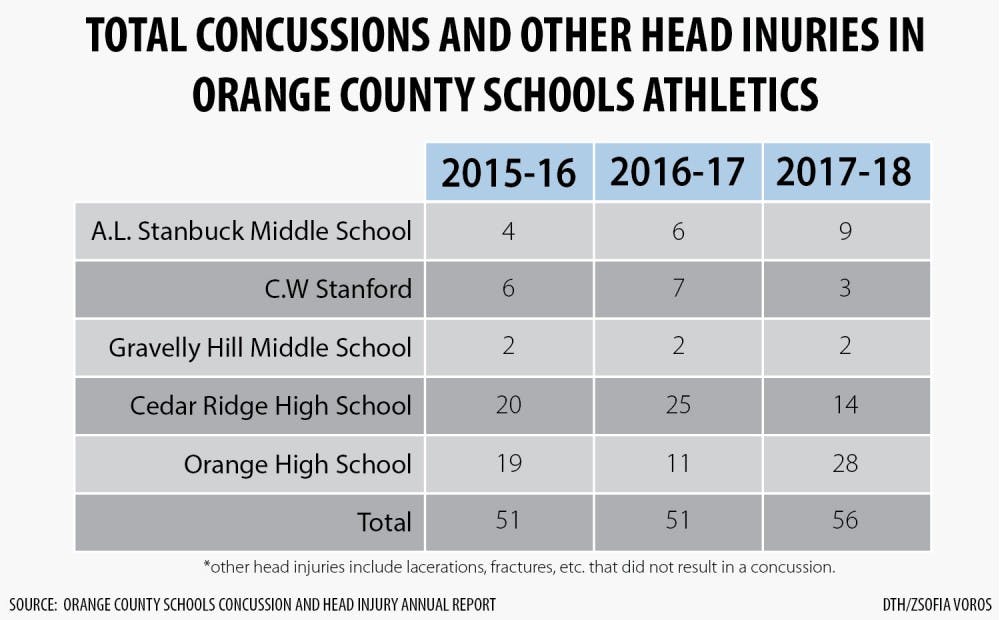It was hard to take a positive stance on concussion avoidance in Orange County Schools on Oct. 23, but Emily Gaddy tried her best to.
Gaddy, the athletic trainer at Orange High School, presented for OCS’ annual concussion and head injury report. She works with the junior varsity and varsity football teams at Orange High School, which had that had two concussions at their Oct. 12 and 13 games.
Senior running back Marvante Beasley was rushed onto an ambulance after a helmet-to-helmet injury; he was out of the hospital by Oct. 14 and cleared to play for the following week.
The same cannot be said for Thys Oldenburg, a 14-year-old who remains in a medically-induced coma head. Oldenburg took a hit to the head Oct. 12 at a football junior varsity game.
Since the accident, there has been a GoFundMe page for his medical expenses that has raised over $24,000. People have held dinners, made prayer blankets and left messages of support all over the fundraiser page.
Oldenburg was not mentioned by name at the board meeting; neither was Beasley. But they weighed on everyone's mind as Orange County School Board Chairperson Steve Halkiotis addressed Gaddy before the report.
"And I think I can say on behalf of the entire board, thank you for what you do. And what you do, day in and day out, tirelessly,” Halkiotis said.
Gaddy’s presentation outlined a study Orange High School is participating in with the UNC Matthew Gfeller Sport-Related Traumatic Brain Injury Research Center. The center is named after a high school football player who died as the result of a helmet-to-helmet collision in his first varsity football game.
The center is working with four local high schools, including Orange High and Cedar Ridge High School in OCS, by installing sensors (with parent permission) in the team’s football helmets.The helmet data helps the center identify “at-risk” students for concussions.



